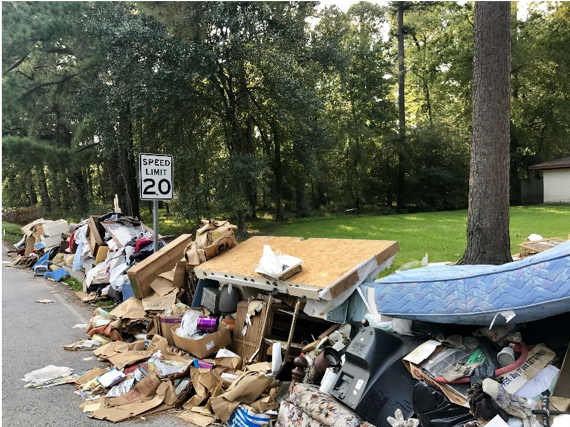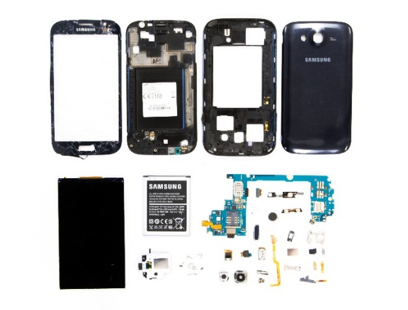What happens to your electronics when they are destroyed by a disaster?
The following content was created by Alexandra Leader in November 2018 as an educational sustainability blog post.

If a disaster struck your home right now, how many electronic devices would be destroyed? The average American has about 15 devices in their household, including TVs, DVD players, smartphones, and laptops. The electronics that could be damaged are not only those that you’re currently using, but also those that are stored in your closets and basements. Maybe you take your smart phone, laptop, and tablet with you when you evacuate, but probably not the old bulky television that’s been hanging around in your basement for years, or the large gaming system or monitor that is difficult to pack.
Now think about the valuable gold, the toxic lead, and the energy-hogging aluminum contained within those electronics. These materials are likely headed to the landfill once everyone has returned home and cleanup begins.
Recycling the electronic waste from a disaster can
- recover valuable materials,
- stop toxic materials from harming human health or the environment, and
- prevent the loss of the embodied energy and greenhouse gas emissions that went into making the materials.
A case study by Leader et al. compares the impact of recycling electronic waste following a flood with that of landfilling it (and then having to produce that same amount of new materials again). The authors found that recycling can save significant energy and greenhouse gas emissions. Even in a minimal material recovery scenario, they show savings equal to not burning 150 tons of coal and taking 60 cars off the road for a year. Also, such an “urban mine” of materials could be worth $26,000– 77,000 within the same scenario.
Why isn’t the collection and recycling of electronic debris part of disaster-waste management plans? It’s a question many researchers are asking today. As you might expect, recycling electronic waste is probably not at the front of people’s minds after a disaster (if it crosses their minds at all). As researchers, we argue that this is precisely why policies should exist. Such policies will help people make decisions in the chaos after a disaster that will benefit the long-term health of communities, environments, and economies.












